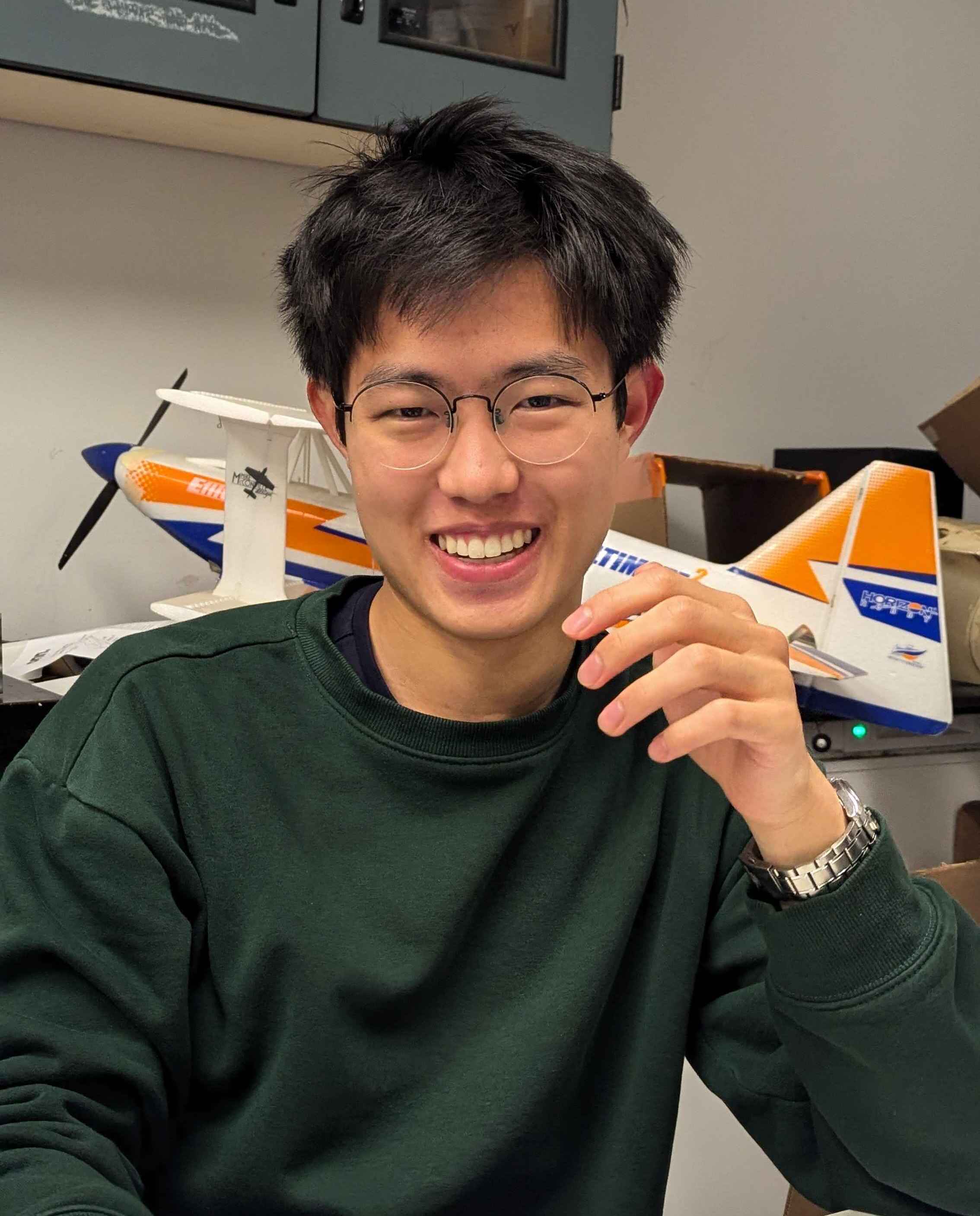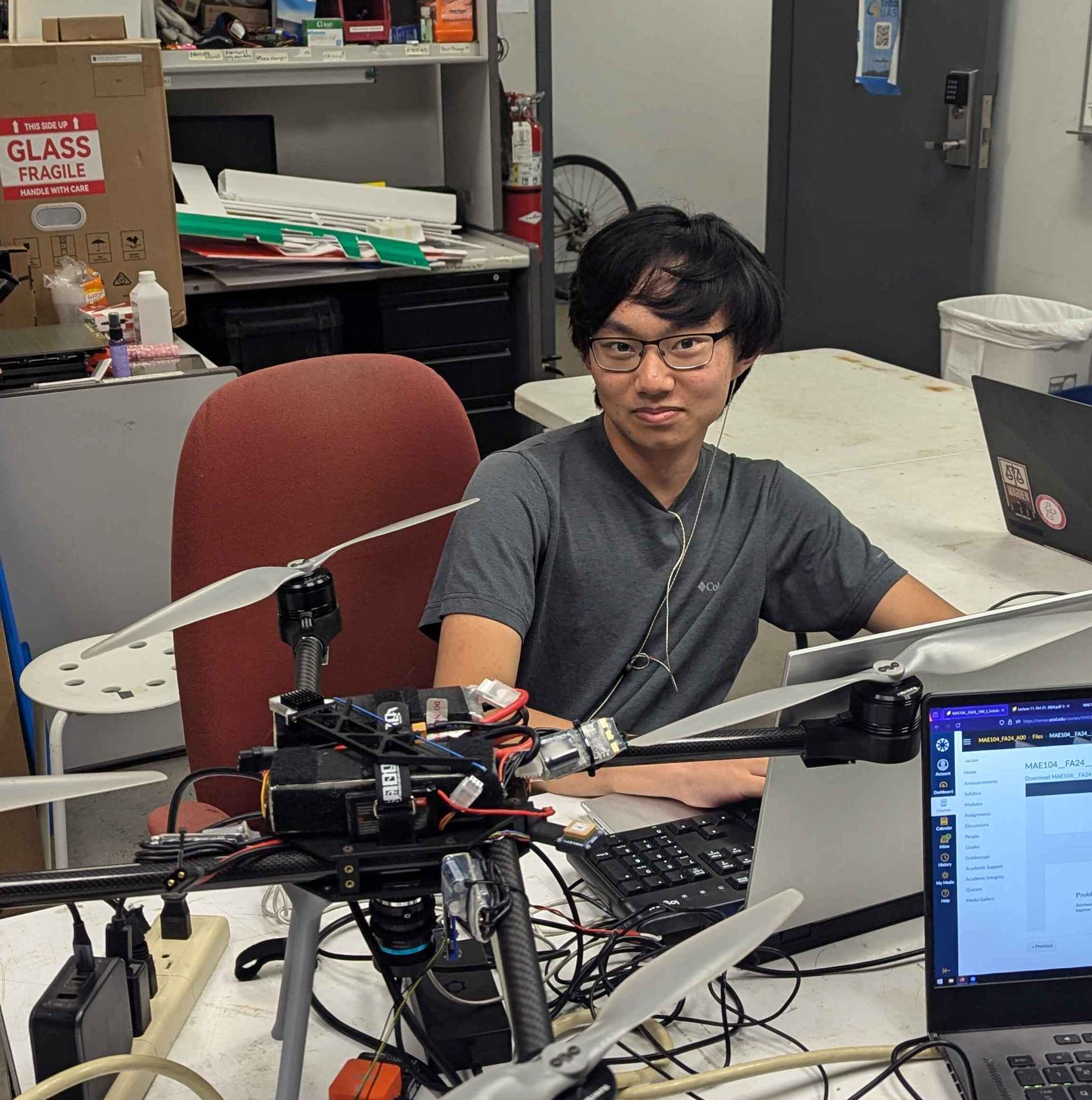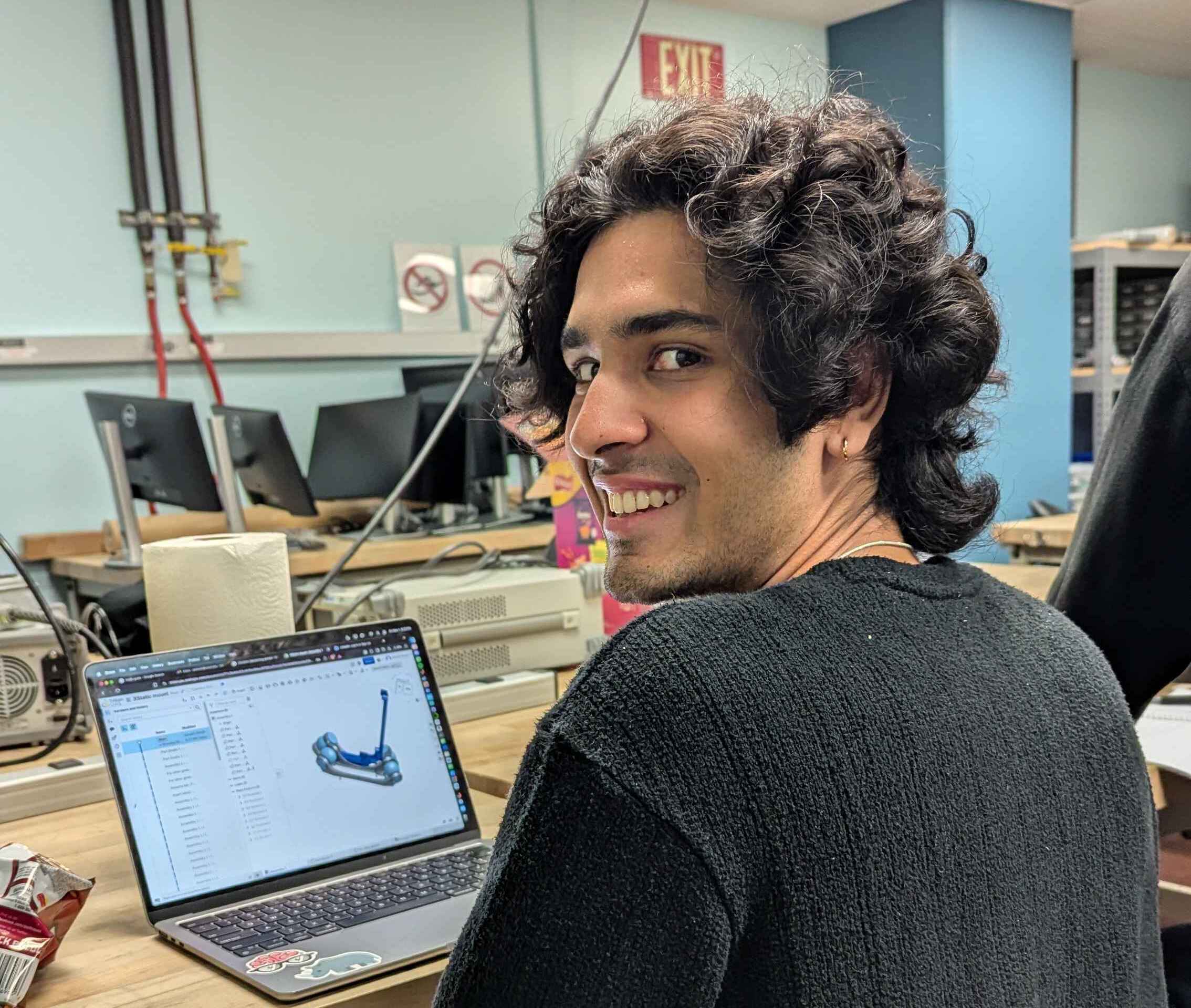LA JOLLA, CA - UC San Diego. Come take a look at a behind-the-scenes look at a part of the TritonUAS team, showcasing the dedicated students working on various aspects of UAV (Unmanned Aerial Vehicle) development. From software engineers building real-time data systems to electrical engineers perfecting camera controls and motor systems, each team member brings unique skills and perspectives to the project. In this post, we introduce a few of the talented individuals driving TritonUAS forward, sharing their roles, current projects, and hopes for the team’s success this year.
TritonUAS Software Team Spotlight
Software Team

Returner: Christopher Lee
Role: Software Lead
Christopher is responsible for logging OBC (On-Board Computer) messages and sending them to the Ground Control Station (GCS). His goal with this work is to gain a deeper understanding of the UAV code as it operates during flights.
Hopes for the Team:
- Help new members settle in, feel comfortable with the team and technology.
- Fully complete the testing pipeline.
- Emphasize trust within the team to accomplish tasks.
Goals for This Year:
- Collect more testing data earlier.
- Create more learning opportunities for members to gain experience and grow beyond last year’s achievements.

First Timer: Daniel Duu
Role: Software Team Member
Daniel is working on processing data from the camera and integrating that output with other plane systems, including the On-Board Computer and the computer vision pipeline. A key aspect of his work involves tagging images with metadata (GPS coordinates, attitude, and altitude) to enable effective localization by other systems.
Technology:
- Uses MAVLink protocol to facilitate data requests and reception between the flight controller and the Raspberry Pi on the drone.
Impact:
Daniel finds his work impactful because it involves collecting real-world data for testing models that will be used in competition. By testing with actual data, they can ensure more accurate and reliable outcomes in the main model.
Hardware Team

First Timer: Lek Man
Role: Mechanical Engineer
Lek is a first-time member of the Hardware Team, working on two distinct projects: an onboarding RC plane and the camera gimbal for the competition UAV. The onboarding project involves constructing a basic RC plane from foam board, utilizing a few essential electronics like servos, a BLDC motor, and a transceiver. This project serves as an introductory experience, allowing Lek to learn the fundamentals of hardware construction and electronics.
For the camera gimbal project, Lek is responsible for designing and assembling the gimbal hardware, including the arms, mounts for the camera, and PCB housing. His work ensures the camera remains stable and reliable—critical for the UAV’s mission success. Though he considers it a relatively simple task, he understands its importance and is also exploring the electronic and software components of the gimbal, aiming to make a more substantial impact on the project.
Impact:
Lek believes his contributions to the camera gimbal are essential, as a well-functioning gimbal is crucial to the mission’s success. He is excited to dive into the electronic and software components to deepen his impact. Although the onboarding RC plane doesn’t directly contribute to the competition plane, it is an exciting first build for him, and he finds value in the skills and experience he’s gaining along the way.
TritonUAS Electrical Team Spotlight
Electrical Team

Returner: Advaith Vinoth
Advaith Vinoth, a member of the Camera Gimbal subteam on the TritonUAS Electrical Team, is focused on embedded coding to control the camera systems and motors for tracking targets, as well as managing additional sensors on the UAV. His subteam is involved in PCB design and developing efficient embedded systems using STM32 Microcontrollers programmed in C. They are also working with communication protocols to ensure seamless interactions between various electronic subsystems.
Goals for the Year:
- Help position TritonUAS on the podium at SUAS.
- Develop a broad set of technical skills across engineering disciplines.
- Contribute impactful components that enhance the success of the UAV.
These dedicated team members, both new and experienced, bring diverse skills and ambitious goals to TritonUAS. Their work in software, hardware, and electrical engineering showcases a collaborative spirit, driving the project toward success. Stay tuned for more updates on their progress throughout the year!